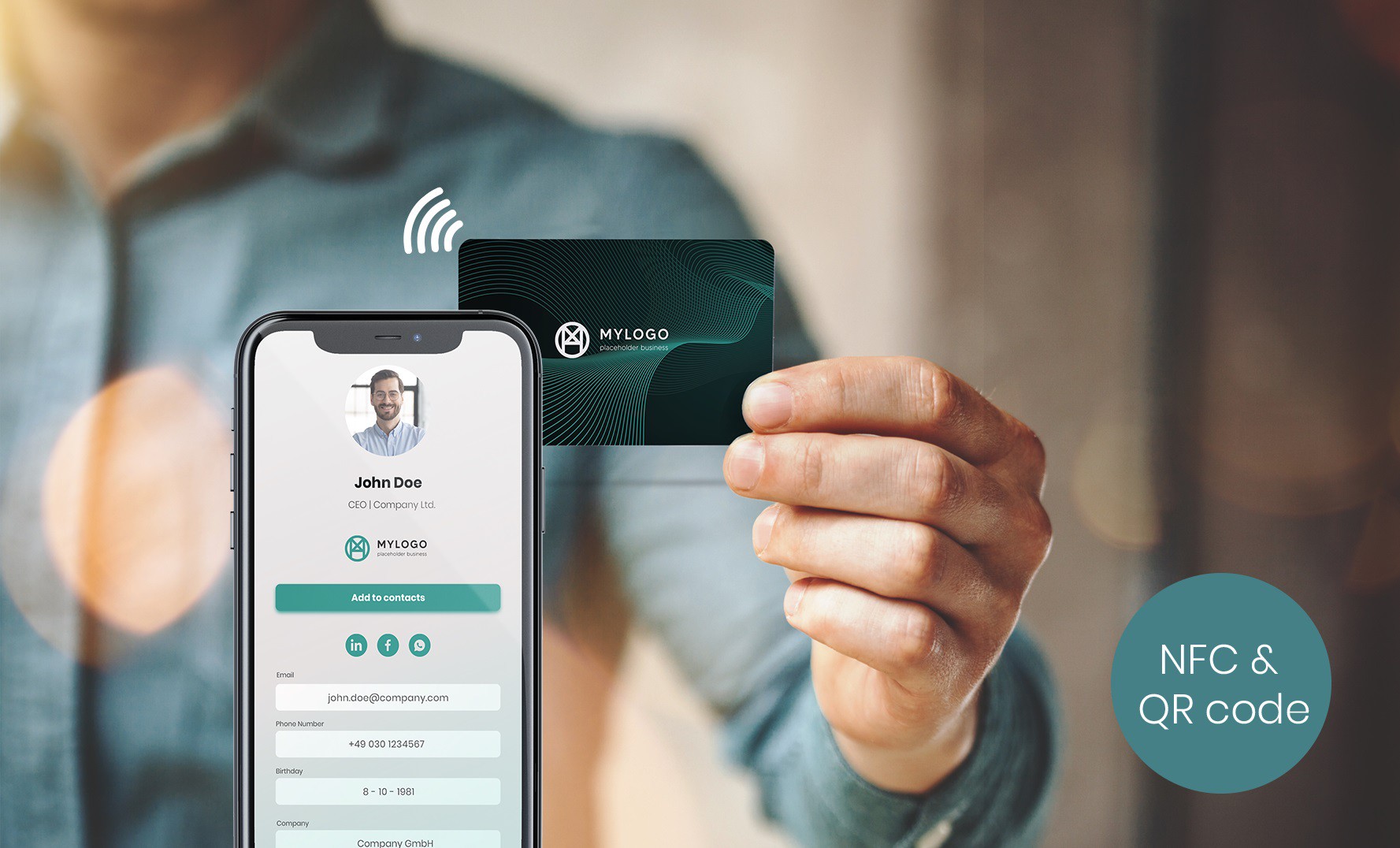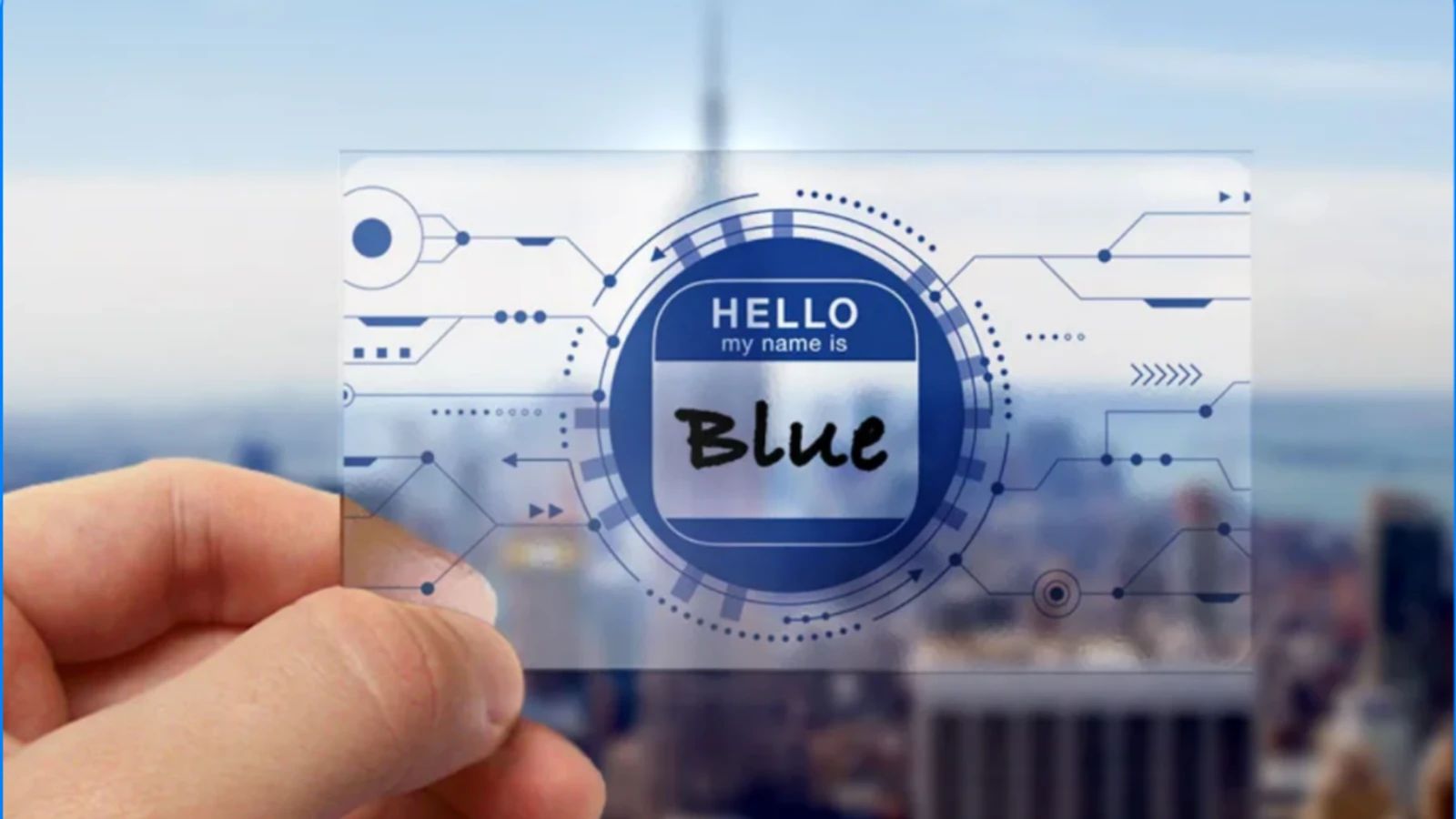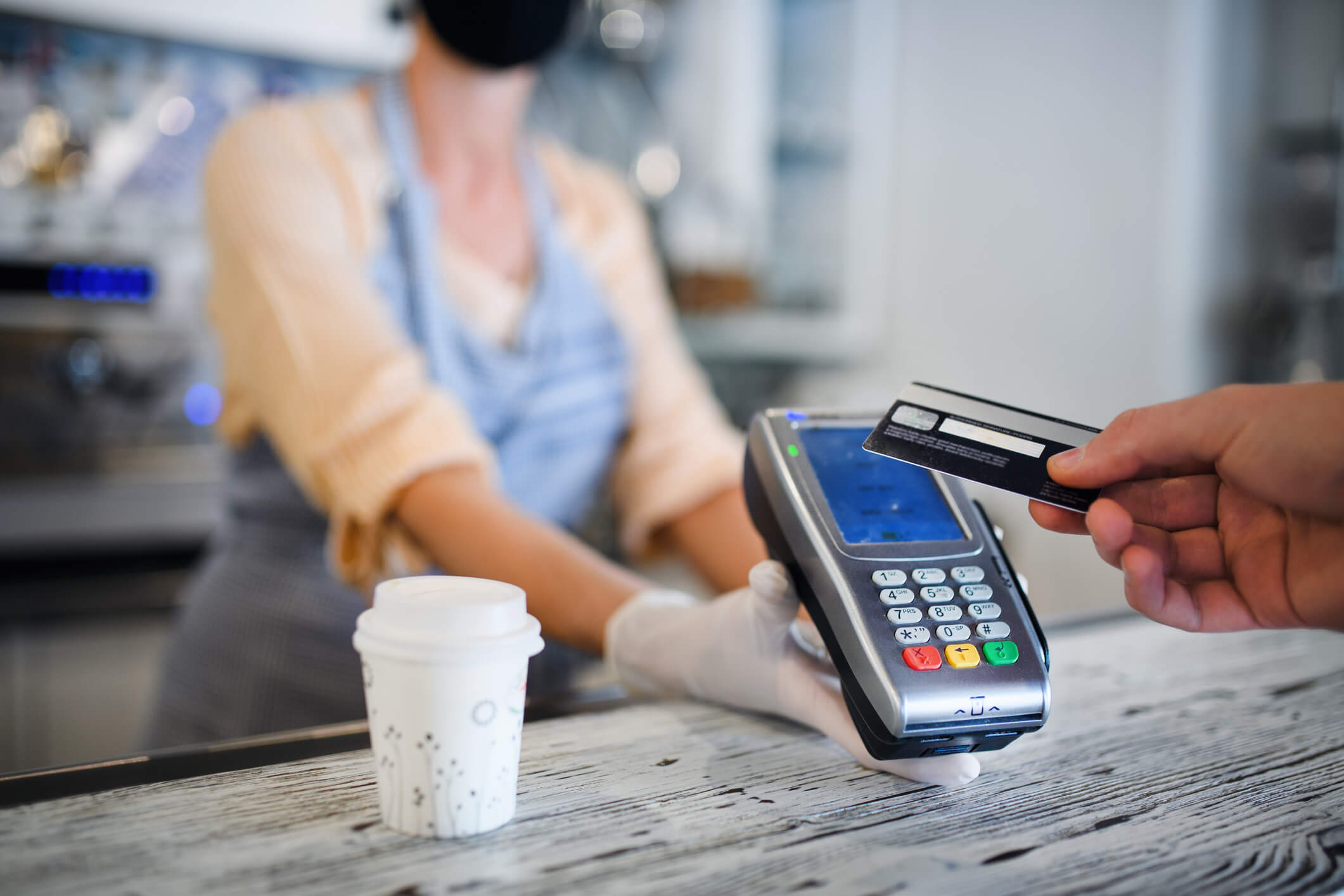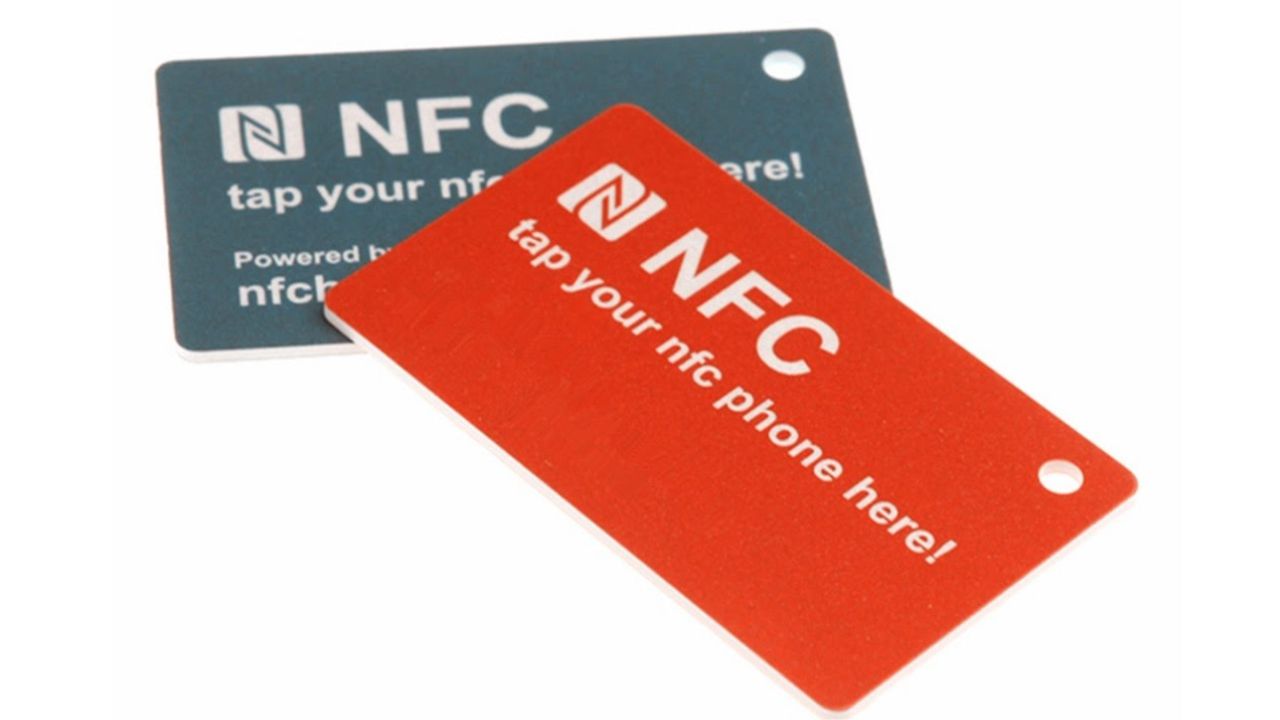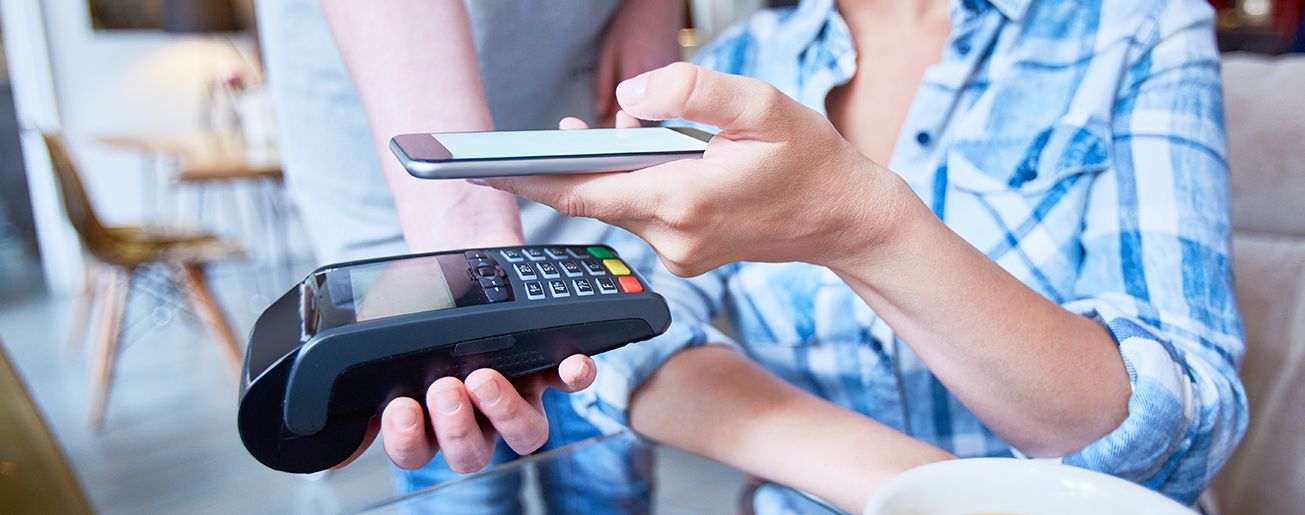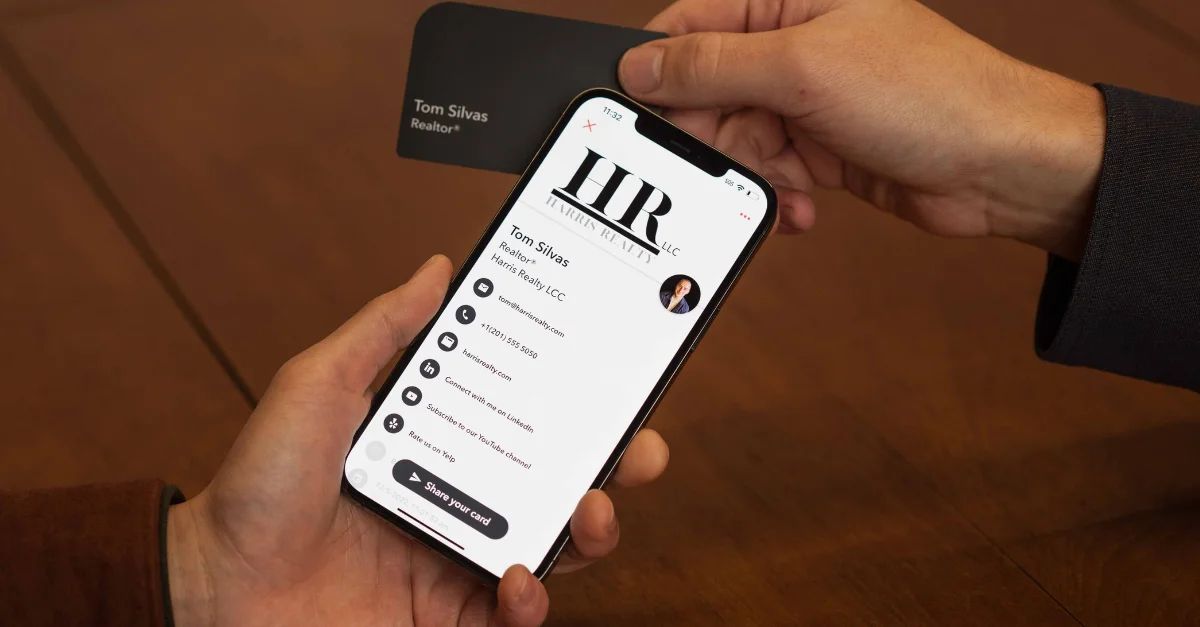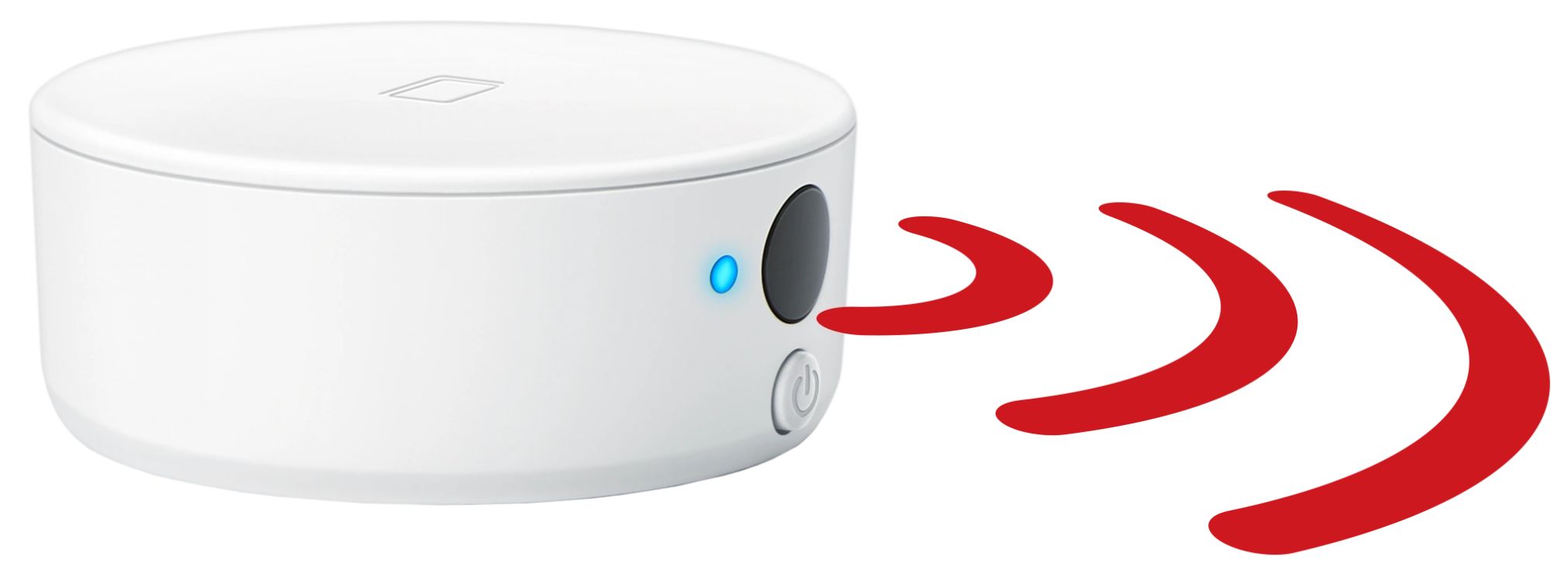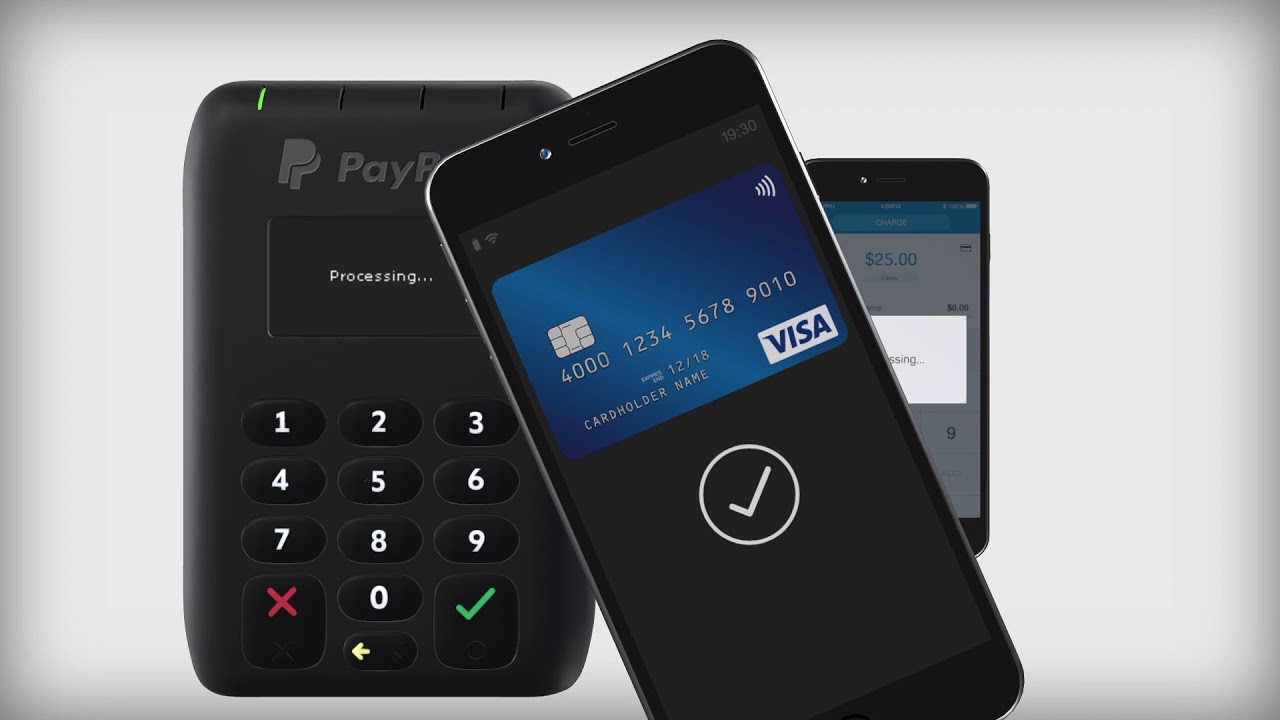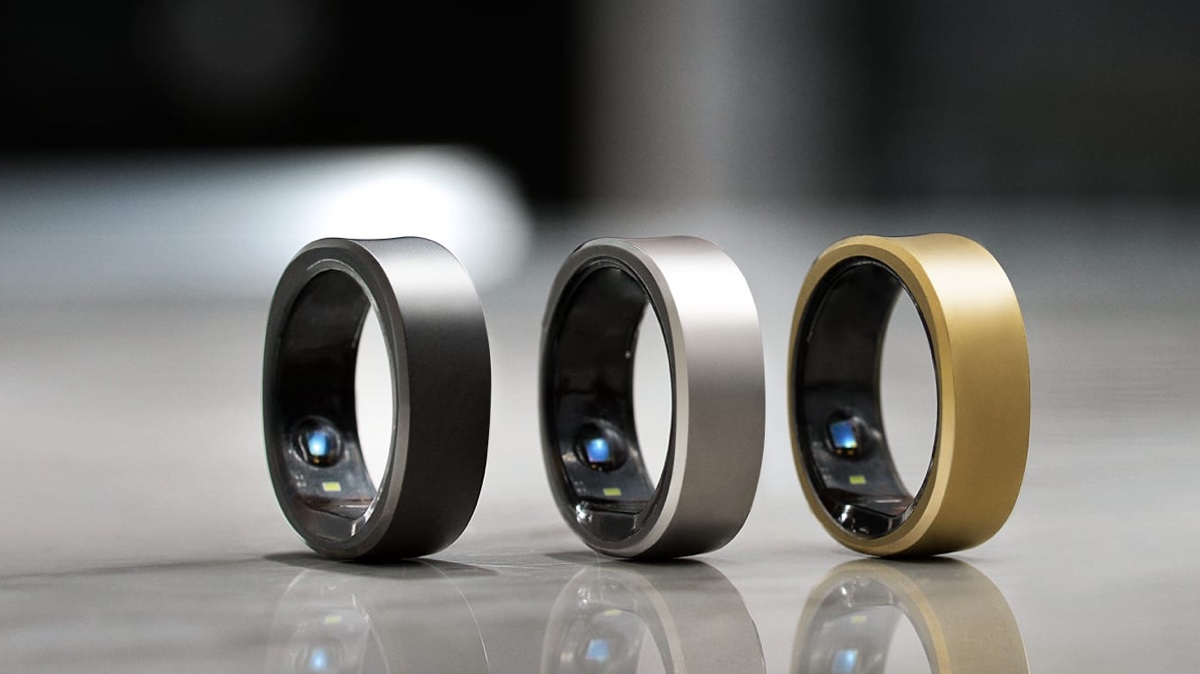Introduction
Welcome to the world of NFC, where technology seamlessly integrates with business cards to give them a new dimension. NFC, short for Near Field Communication, has revolutionized the way we exchange information and connect with others.
Imagine a scenario where you could share your contact details, social media profiles, website links, or even a portfolio of your work, all with just a simple tap. This is made possible by using an NFC-enabled business card, a game-changing innovation in the world of networking.
NFC technology has gained immense popularity, thanks to its convenience and ease of use. With NFC, users can establish a connection between two devices by simply bringing them close together, eliminating the need for cables or Wi-Fi connectivity.
In recent years, NFC has become a standard feature on smartphones, making it accessible to a wide audience. By utilizing the NFC capabilities of smartphones, individuals and businesses can leverage this technology to revolutionize the way they share information.
In this article, we will delve into the world of NFC business cards, exploring what NFC is, how it works in smartphones, the benefits of using an NFC business card, how to use them effectively, and popular options available in the market.
So, whether you’re a professional looking to make a lasting impression or a business owner seeking innovative ways to promote your brand, embracing NFC business cards might be the perfect solution for you. Let’s dive in and discover how this exciting technology can transform the way you exchange information and network.
What is NFC?
NFC, or Near Field Communication, is a wireless communication technology that allows devices to establish a connection by simply touching or bringing them close together. It operates on radio frequency identification (RFID) principles and enables data transfer over short distances, typically a few centimeters.
This technology was first introduced in the early 2000s and has since gained widespread adoption in various industries, including retail, transportation, and telecommunications. NFC is built upon RFID technology, but with the added capability of bidirectional communication, enabling devices to both read and transmit information.
The primary advantage of NFC is its simplicity and convenience. Unlike other wireless communication technologies like Bluetooth or Wi-Fi, NFC doesn’t require complex setup or pairing processes. With NFC, users can establish a connection by simply tapping their devices together or bringing them close together, allowing for quick and effortless data exchange.
NFC operates at a frequency of 13.56 MHz, which is within the high-frequency range. This frequency ensures compatibility with a wide range of devices, including smartphones, tablets, credit card terminals, and even certain types of access cards.
One of the distinguishing aspects of NFC is its ability to operate in three modes: reader/writer mode, peer-to-peer mode, and card emulation mode. In reader/writer mode, an NFC-enabled device acts as a reader to interact with NFC tags or other compatible devices. In peer-to-peer mode, two NFC-enabled devices can exchange data directly with each other. Lastly, in card emulation mode, an NFC device can mimic a contactless smart card, allowing it to be used for payment or access purposes.
Overall, NFC technology has opened up a wide range of possibilities for convenient and secure data transfer. Its applications extend far beyond business cards and include contactless payments, ticketing, access control, and even smart home automation. By harnessing the power of NFC, individuals and businesses can streamline processes, enhance user experiences, and enable seamless connections.
How does NFC work in smartphones?
NFC technology has become a standard feature in many smartphones, enhancing their functionality and enabling a multitude of applications. But how exactly does NFC work in smartphones?
Smartphones with NFC capabilities have a small chip embedded within them, known as an NFC chip or controller. This chip communicates with other NFC-enabled devices using radio waves, allowing for seamless data transfer.
When two NFC-enabled devices come into close proximity (typically within a few centimeters), their NFC chips establish a connection. This connection enables the devices to exchange data bidirectionally, meaning they can both send and receive information.
One of the primary uses of NFC in smartphones is for contactless payment systems, such as Apple Pay or Google Pay. When making a payment, the smartphone’s NFC chip communicates with a compatible payment terminal, transmitting the necessary payment information securely.
Besides contactless payments, smartphones can also utilize NFC for other applications. For example, tapping an NFC-enabled smartphone to an NFC tag can trigger actions like opening a website, launching an app, or performing specific tasks, all programmed within the tag itself.
Smartphones in peer-to-peer mode can also use NFC to exchange various types of data, including contacts, photos, videos, or even documents. By simply tapping the devices together, users can quickly transfer files without the need for additional cables or complicated setup processes.
Furthermore, NFC technology enables smartphones to emulate contactless smart cards. This means that, with the appropriate software and authorization, smartphones can be used to make payments or access secure areas, just like a physical card would.
The security of NFC in smartphones is a paramount consideration. NFC transactions are typically protected against eavesdropping and data interception by using encryption protocols. Additionally, smartphones often require the user to authenticate themselves with a password, fingerprint, or facial recognition before allowing NFC transactions to take place.
Overall, NFC technology in smartphones provides a convenient and secure way to interact with various devices and services. Whether it’s making payments, sharing files, or accessing restricted areas, the seamless connectivity provided by NFC enhances the overall user experience and simplifies day-to-day tasks.
What is an NFC business card?
An NFC business card is a modern twist on the traditional paper business card. It incorporates Near Field Communication (NFC) technology, allowing for seamless and interactive data exchange when it comes to networking and sharing contact information. While traditional business cards typically only convey basic contact details, NFC business cards take networking to the next level by enabling users to share a wide range of digital content with a simple tap.
At its core, an NFC business card consists of a physical card, similar in size and design to a traditional business card. However, embedded within the card is an NFC chip, which houses the data that can be accessed and transmitted to other NFC-enabled devices.
The NFC chip in an NFC business card can store a variety of information such as contact details, social media profiles, website links, product catalogs, or even videos and multimedia content. All of this information can be programmed and customized according to the individual or business’s preferences.
When an NFC business card comes into contact with an NFC-enabled smartphone, the two devices establish a connection and initiate data transfer. This connection is typically made by tapping the back of the NFC business card against the smartphone, just like a traditional handshake in networking events.
Once the connection is established, the NFC-enabled smartphone detects the presence of the NFC chip in the business card and prompts the user with various options. Users can choose to save the contact details directly into their phone’s contacts, visit the website link, connect on social media platforms, or access any other digital content stored on the NFC chip.
An NFC business card offers several advantages over traditional paper business cards. Firstly, it eliminates the need for manual data entry or scanning QR codes, streamlining the process of saving and accessing contact information. This saves time and reduces the chance of error in transcribing contact details.
Moreover, NFC business cards provide a more interactive and engaging networking experience. By offering multimedia content or links to online portfolios, users can showcase their work, products, or services in a dynamic and impressive way. This adds value to the networking experience, leaving a lasting impression on potential clients or partners.
Additionally, NFC business cards are eco-friendly since they eliminate the need for printing and distributing physical cards. With NFC technology, users can easily update and modify their contact details or content without the need for reprinting.
Overall, NFC business cards offer a new and innovative approach to networking, enabling individuals and businesses to share diverse digital content and make meaningful connections. With their convenience, interactivity, and environmental benefits, NFC business cards are becoming increasingly popular in the modern world of networking.
Benefits of using an NFC business card
Using an NFC business card brings a plethora of benefits that go beyond the limitations of traditional paper business cards. Let’s explore some of the advantages of incorporating NFC technology into your networking and marketing strategies.
1. Seamless and Convenient: NFC business cards enable effortless data exchange. With a simple tap, users can transmit their contact information, social media profiles, website links, and more, eliminating the need for manual data entry or QR code scanning.
2. Enhanced Interactivity: NFC business cards offer an interactive experience by allowing users to share multimedia content such as videos, presentations, or product catalogs. This engagement leaves a lasting impression and boosts the chances of making meaningful connections.
3. Versatile and Customizable: NFC technology allows for flexible programming and customization. Users can easily update and modify the information stored on the NFC chip, ensuring that their business card always reflects the most current and relevant details.
4. Reduction of Paper Waste: By opting for an NFC business card, you contribute to environmental sustainability by reducing the need for paper production and printing. This eco-friendly choice aligns with modern green initiatives and showcases your commitment to sustainable practices.
5. Increased Brand Visibility: With NFC business cards, you have the opportunity to link the digital content embedded in the card to your brand website, social media profiles, or online portfolio. This facilitates easy access to your brand’s online presence, enhancing visibility and expanding your reach.
6. Improved Data Accuracy: NFC eliminates the potential for transcription errors that can occur when manually entering contact information from paper business cards. By automatically transferring data from the NFC chip, you ensure the accuracy of contact details, minimizing communication hiccups.
7. Cost-Effective Solution: While the upfront investment in NFC business cards may be higher than traditional paper business cards, in the long run, they prove to be a cost-effective option. Since NFC business cards can be easily updated and reused, you save money on constant reprinting.
8. Differentiation in a Competitive Market: NFC business cards set you apart from competitors who still rely on traditional paper cards. By embracing this innovative technology, you position yourself as forward-thinking, tech-savvy, and willing to adapt to modern networking trends.
As you can see, NFC business cards bring a multitude of benefits that cater to the evolving needs of networking and marketing. They offer a seamless and engaging experience, contribute to environmental sustainability, and help you make a memorable impression in a competitive business landscape.
How to use an NFC business card
Using an NFC business card is simple and straightforward. Follow these steps to make the most of this innovative networking tool:
1. Ensure NFC is enabled: Make sure that NFC is enabled on your smartphone. You can usually find this setting in the device’s “Settings” menu, under the “Connections” or “Network & Internet” section.
2. Tap your NFC business card: When you meet someone who wants to exchange contact information, tap the back of your NFC business card against their NFC-enabled smartphone. You can instruct them to do the same if they have an NFC business card.
3. Accept the connection: Once the NFC connection is initiated, your smartphone will prompt you with available options. Depending on the settings, you may be asked to confirm the action or choose how to handle the received data, such as saving it to your contacts or visiting a website.
4. Access the shared information: After accepting the connection, you can access and interact with the information shared by the NFC business card. This can include saving the contact details directly to your phone, following the person on social media, visiting their website, or accessing any other digital content embedded in the NFC business card.
5. Customize your NFC business card: Take advantage of the customization options offered by your NFC business card. Program the NFC chip to contain the desired information and ensure it accurately represents your brand or personal identity. Update the information as needed to keep it current.
6. Share your own NFC business card: Use your NFC business card proactively by offering it to potential contacts, clients, or partners during networking events, conferences, or business meetings. Encourage them to tap their NFC-enabled smartphone against your card to exchange information easily.
7. Educate others about NFC technology: NFC technology may still be unfamiliar to some people. Take the opportunity to educate others about the benefits and convenience of NFC business cards. Explain how they can quickly and effortlessly exchange information by simply tapping their smartphone against an NFC-enabled card.
By following these steps, you can effectively utilize an NFC business card to enhance your networking efforts. The simplicity and convenience of NFC technology make it a powerful tool for connecting with others and ensuring that your contact information is readily accessible and always up-to-date.
Designing an effective NFC business card
In addition to leveraging the technical capabilities of NFC technology, designing an effective NFC business card plays a crucial role in creating a lasting impression and maximizing its impact. Here are some key factors to consider when designing your NFC business card:
1. Clear and concise information: Ensure that the essential contact details, such as your name, job title, phone number, and email address, are prominently displayed. Keep the text concise and legible, avoiding cluttered designs that may make it difficult for recipients to read the information.
2. Incorporate your branding: Use your brand colors, fonts, and logo on the NFC business card to maintain consistency with your overall brand identity. This helps to reinforce brand recognition and create a cohesive visual experience.
3. Visual appeal: Create an aesthetically pleasing design that captivates attention. Use attractive visuals, such as high-quality images or illustrations, to enhance the visual appeal of your NFC business card. However, ensure that the design elements do not overshadow the important contact information.
4. Use NFC-friendly materials: Select materials that do not interfere with the NFC signal transmission. Avoid thick metal or metallic paper, as they can significantly reduce the effectiveness of the NFC technology. Opt for materials like plastic or paper with an NFC-compatible layer to ensure optimal performance.
5. Strategic placement of the NFC chip: Consider the placement of the NFC chip within the card. Position it in a visible and easily accessible area to ensure a smooth tapping experience. This can be near the edges or in a designated spot indicated by a relevant symbol or label.
6. Call-to-action: Include a clear call-to-action on your NFC business card. Encourage recipients to tap their NFC-enabled smartphones to access additional information or connect with you on social media platforms. This prompts engagement and helps recipients understand the interactive nature of your NFC business card.
7. Test and optimize: Before finalizing your NFC business card design, it’s essential to test its functionality. Verify that the NFC chip is properly programmed to trigger the desired actions and that it works reliably across different smartphones and operating systems. Ask for feedback from colleagues or friends to ensure a seamless user experience.
Remember, the design of your NFC business card should reflect your professionalism, brand identity, and commitment to innovation. By creating an effective and visually appealing design, you can make a strong first impression and leave a lasting impact on recipients, opening up new networking opportunities and showcasing your modern approach to business.
Popular NFC business card options
As NFC technology continues to gain popularity, various options for NFC business cards have emerged in the market. These options offer different features, materials, and designs to suit individual preferences and business needs. Here are some popular NFC business card options to consider:
1. Traditional Card with NFC Chip: This option maintains the appearance and size of a traditional business card but incorporates an NFC chip within the design. It is a versatile choice as it can be easily customized and printed on various card stocks, allowing for a wide range of design possibilities.
2. Metal NFC Card: For a sleek and premium look, metal NFC cards are a popular choice. They are typically made of stainless steel or aluminum and can be engraved or etched with contact information and branding details. Metal NFC cards exude sophistication and durability, making a memorable impression on recipients.
3. Plastic NFC Card: Plastic NFC cards offer durability and flexibility, making them suitable for various industries. They are resistant to wear and tear, ensuring the longevity of the NFC functionality. Plastic NFC cards can be transparent, translucent, or colored, allowing for creative and eye-catching designs.
4. Multi-functional NFC Card: This advanced option combines NFC technology with other features, such as a USB drive, QR code, or magnetic strip. With a multi-functional NFC card, users can choose their preferred method of data transfer, making it compatible with different devices or systems.
5. Eco-friendly NFC Card: As sustainability becomes a growing concern, eco-friendly NFC cards have gained popularity. These cards are made from recycled or biodegradable materials, contributing to environmental conservation efforts.
6. Shaped or Die-cut NFC Card: Break away from the traditional rectangular shape by opting for die-cut or shaped NFC cards. These cards can be custom-designed to reflect the nature of your business or personal brand. Unique shapes create visual interest and make your NFC card stand out from the crowd.
7. NFC-enabled Smart Stickers: These compact NFC stickers can be affixed to various surfaces, turning almost anything into a “smart” object. NFC stickers are versatile and can be used on laptops, notebooks, products, or promotional materials. They offer a cost-effective option for integrating NFC technology into your branding strategy.
8. Digital NFC Business Card Apps: Beyond physical NFC business cards, numerous mobile applications offer digital NFC business cards. These apps allow users to create and share dynamic NFC profiles directly from their smartphones. Recipients can tap their NFC-enabled devices to access the shared information and save it for future use.
When choosing an NFC business card option, consider factors such as design flexibility, functionality, durability, and budget. Assess your branding needs and the impression you want to make to determine which option aligns best with your goals and target audience.
Ultimately, regardless of the NFC business card option you choose, incorporating NFC technology into your networking arsenal can elevate your professional image, foster meaningful connections, and showcase your readiness to embrace innovative solutions in a digital world.
Conclusion
NFC business cards offer a modern and innovative approach to networking, revolutionizing the way we exchange contact information and connect with others. With the power of Near Field Communication technology, these cards enable seamless and interactive data transfer, bringing numerous benefits to individuals and businesses alike.
By using an NFC business card, you can share contact details, social media profiles, website links, and multimedia content with just a simple tap of the card against an NFC-enabled smartphone. This convenience eliminates the need for manual data entry, enhances engagement, and leaves a lasting impression on those you interact with.
NFC technology in smartphones enables the connection and exchange of data, making it easy to save contacts, access websites, or view digital content embedded in an NFC-enabled business card. The security measures in place protect sensitive information, ensuring a safe and reliable experience.
Designing an effective NFC business card involves clear and concise information, branding consistency, visual appeal, and consideration of NFC-friendly materials. By following these design principles, you can create a memorable and visually appealing card that represents your brand identity and sets you apart from the competition.
Popular NFC business card options include traditional cards with embedded NFC chips, metal or plastic cards for a premium look, multi-functional cards, eco-friendly options, die-cut or shaped cards, NFC-enabled smart stickers, and digital NFC business card apps. Each option offers unique features and customization possibilities to meet diverse preferences and requirements.
Embracing NFC business cards unlocks numerous opportunities for networking, branding, and making meaningful connections. The convenience, interactivity, versatility, and eco-friendliness of NFC technology make it a valuable asset in a digital world where seamless connectivity and eco-consciousness are highly valued.
So, whether you’re an entrepreneur, a professional, or a business owner looking to make a lasting impression, consider harnessing the power of NFC technology in your business cards. Embrace the cutting-edge possibilities offered by NFC, elevate your networking efforts, and stay ahead in a world where connectivity and innovation go hand in hand.







